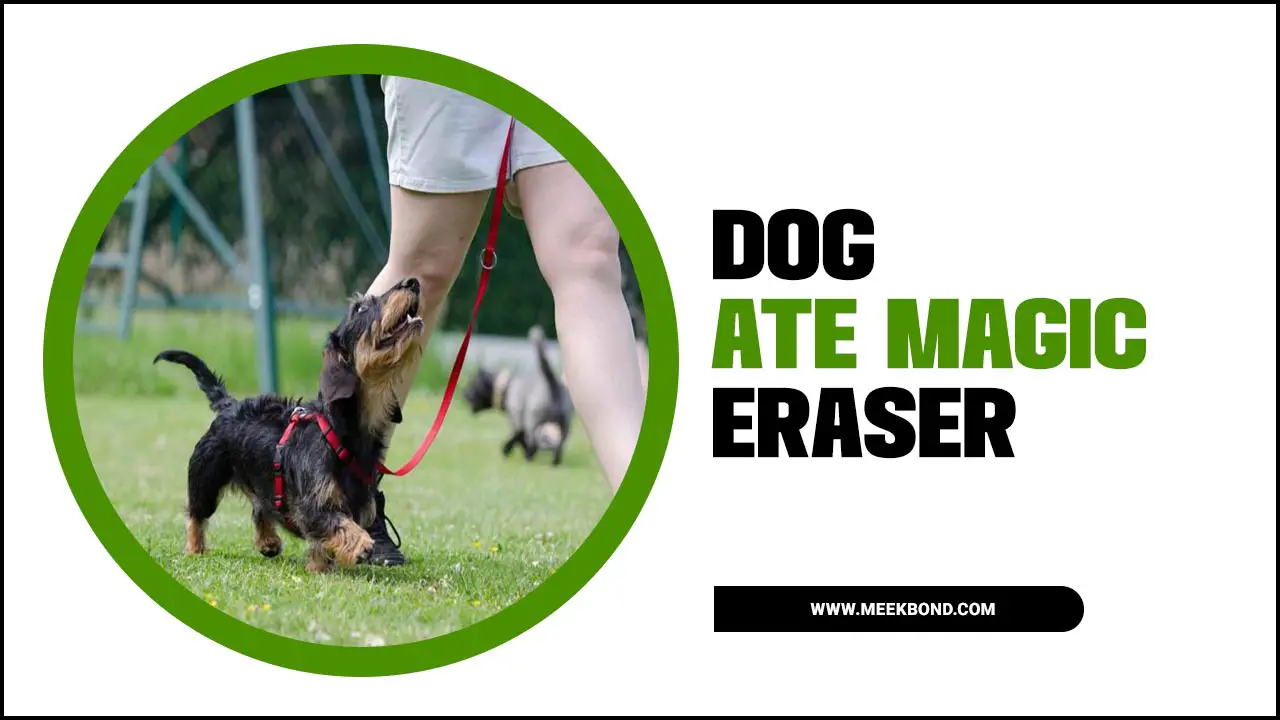Dogs are known for their loyalty, affection, and playfulness, making them beloved pets worldwide. They come in all shapes and sizes, from tiny Chihuahuas to massive Great Danes, and each breed has unique personality traits.
Dogs have been bred for various purposes throughout history, including hunting, herding, and guarding. Today, they serve as beloved companions for millions of people worldwide. As a dog owner, have you ever wondered what your furry friend is trying to communicate to you through their body language?
Dogs have been our companions for thousands of years, but understanding their non-verbal cues can still be difficult. We will also discuss specific dog’s body language indicators, such as posture and piloerection, and provide tips on responding appropriately to your dog’s signals. So let’s get started on learning how to speak fluent dogs.

Key Factors That Will Help Understanding Dog’s Body Language

Language is a fascinating and complex communication system that has evolved over centuries. It allows us to express our thoughts, feelings and ideas to others. From spoken language to written language, there are countless ways in which we can use language to express ourselves.
As such, dogs use a unique language to communicate with each other and with humans. Here are the basics that will help you understand dog’s body language. Scroll down to get into details.
1. Understanding A Dog’s Facial Expressions
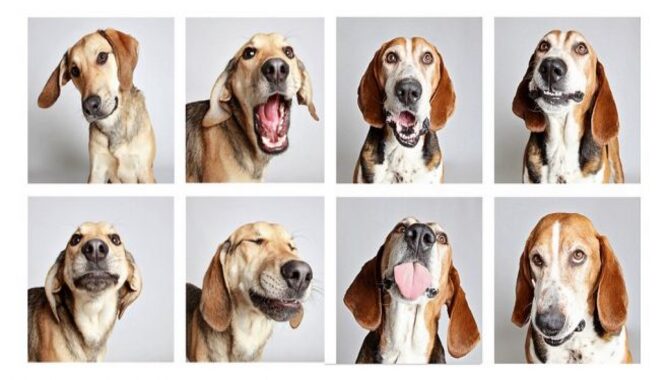
Dogs communicate through body language and vocalization, making it important to understand their emotional state. Understanding a Dog’s Facial Expressions is crucial in this regard. Canine communication involves more than barking. Dogs use facial expressions to convey happiness, excitement, fear, and anxiety.
Relaxed dogs have an open-mouthed expressions, while tense dogs have furrowed brows. Forward-facing ears indicate alertness, whereas flat ears indicate submission. This aspect of a dog Body Language also stresses observing context alongside breed, age, and personality traits to interpret their emotional state better.
2. Reading A Dog’s Tail Movements

When decoding Dog’s Language, understanding their tail movements is crucial as it helps you understand their emotional state. A wagging tail doesn’t always mean the dog is happy; the speed, direction and height can indicate various emotions – excitement, nervousness or aggression. A tucked tail signifies fear or anxiety, while a high and stiff tail indicates aggression.
Remember to see other body language indicators to understand your pup’s emotional state, such as posture or paw position, which is important. You can establish better communication with your pet by smoothly decoding their body language through canine communication by observing their facial expressions and overall body posture.
3. The Meaning Behind A Dog’s Ear Positions

Canine body language includes different aspects such as the tail position, posture, paw movement, hackles raised, whale eye (whites of their eyes), lip licking and more. The position of dogs’ ears provides insight into their emotions and intentions. While erect ears convey alertness or aggression, relaxed ears indicate a calm or friendly demeanourm.
Fearful dogs may flatten their ears against their head in submission. To interpret your furry friend’s communication correctly, observe the whole body for signs of arousal or relaxation in conjunction with ear position. Understanding this aspect of a dog body language will help improve communication between you and your dog.
4. Interpreting A Dog’s Vocalizations
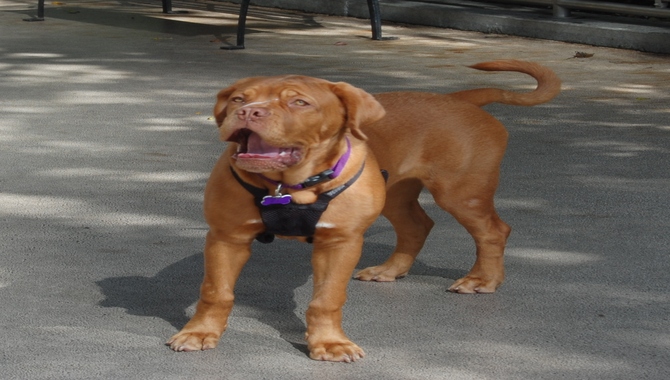
Understanding your pup’s vocalizations is essential in decoding your furry friend’s body language. Barking is common among dogs and can indicate excitement, fear or aggression. On the other hand, growls are often warning signs that show that your pet feels threatened or defensive.
Whining may signify anxiety, whereas howling is natural communication between canines. It’s crucial to note that paying attention to their emotional state and situational factors like breed helps correctly interpret body language signals such as tail wagging and facial expressions. So the next time your furry friend barks or whines at you, pay attention to its whole body rather than only focusing on its vocalization.
5. Decoding A Dog’s Posture And Stance

Understanding a dog body language goes beyond recognizing its primary keyword, ‘Dog Body Language.’ Decoding a dog’s posture and stance is crucial to understanding its emotional state. Bod y posture is one of the most critical components of canine communication.
A relaxed and loose stance indicates that the dog feels calm and comfortable, while an upright posture with raised hackles or a lowered head and tucked tail can suggest aggression or fear.
Observing your pup’s whole body movements from ears to tail position to paw placement in context with other cues like facial expressions and vocalizations can help you decipher what they are trying to convey.
6. Recognizing Signs Of Aggression In Dogs
It’s essential for every dog owner to recognize signs of aggression in their pet. Signs such as baring teeth, direct eye contact, and a stiff body posture indicate an aggressive dog. Raised fur on the back, a lowered head, and dilated pupils are other indicators to watch out for.
Understanding these signals is crucial to prevent potential attacks and ensure safety. Remember that aggression in dogs can stem from fear or anxiety. Therefore, it’s vital to observe your furry friend’s body language closely and seek advice from a professional if necessary.
7. Understanding Relaxed Signals
Understanding canine communication and body language for every dog owner is crucial. Relaxed signals in dog body language are an extremely important aspect of this communication. Dogs give off relaxing cues when comfortable, content and at ease.
Relaxed cues include the wagging of their tail without hesitation, soft gaze with pupils dilated appropriately to the situation at hand, ears placed naturally in response to their emotional state, and neutral whole-body postures that are not stiff or tense.
Comprehending these relaxed cues lets you understand when your furry friend feels calm and collected. It also builds trust and strengthens the bond between you two. This knowledge enables owners to prevent any miscommunication due to misinterpreting their dog’s behavior.
Specific Body Language Indicators To Look For

To better understand your pup’s body language, watch for specific signs. Check out their ears to determine whether they’re in high alert or relaxed mode. Look at the tail position to gauge their emotional state.
Yawning or lip licking could signify stress or anxiety in dogs. Observing the posture and body position will give a better understanding of what they’re trying to say. Taking into account the context in which certain body language is being displayed, it could provide valuable insights into their emotions and needs.
1. Posture And Piloerection
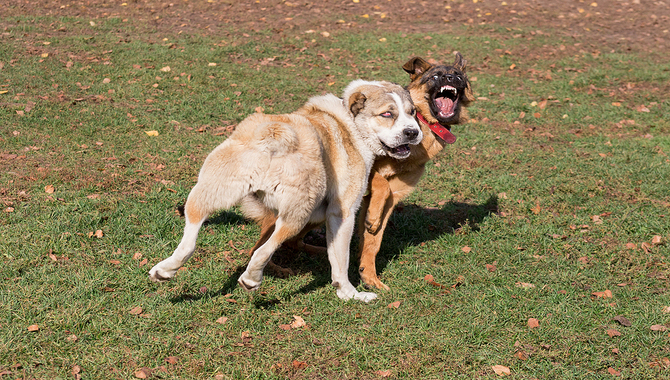
Observing and interpreting your dog body language is essential for effective communication and safety. Canine body language include facial expressions, body posture, eye contact, vocalizations, tail position, and more. Pay attention to your pup’s ears, as they can indicate their mood and alertness.
Notice if your dog is yawning excessively or licking their lips which can be signs of stress or anxiety. A relaxed dog might have a soft gaze or a neutral tail position, while an anxious dog may have tense muscles or a high alert stance. Understanding these details can help you recognize signs of fear or aggression and respond appropriately without risking injury to yourself or others.
2. n Appeasement And Leash Behavior
When it comes to canine communication, understanding appeasement behaviors and leash behavior is crucial. Dogs use these non-verbal cues to signal they are not a threat and want to avoid conflict. Lip licking, yawning, or avoiding eye contact are some examples of such appeasement behaviours.
Additionally, leash behaviour can reveal your pet’s emotions and intentions. Pulling on the leash or refusing to walk may make them anxious or uncomfortable. So pay attention to their body posture and tail position to know whether your pup is in a happy emotional state or feeling fearful.
3. How To Respond To A Dog Body Language
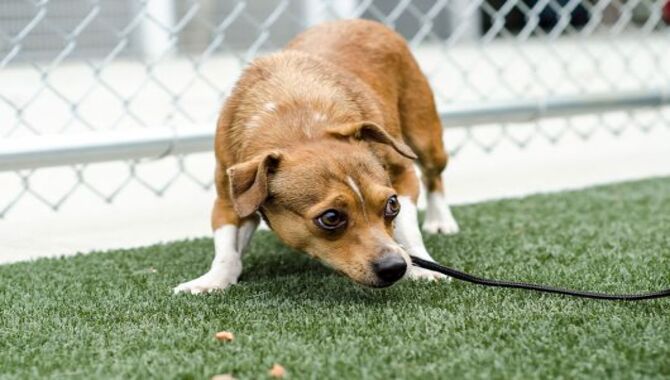
Watch for signs of alertness like growls, lip licking, whines, or the whites of their eyes to understand canine communication. Be aware of body posture, including piloerection, tail position, paw position, and hackles.
Dogs use vocalization, such as barking or howling, to communicate their emotional state. Signs of aggression in dogs include direct eye contact or raised fur on the back.
Respond appropriately by taking caution around aggressive behavior and consulting with a vet or professional trainer if needed. Remember that positive reinforcement training can improve communication between you and your canine companion.
4. Common Misconceptions About Dog Body Language
Accurate interpretation of canine communication via body language is crucial to avoid behaioural problems and potential dog bites. It is important to note that tail wagging does not always reflect a happy dog, nor do baring teeth imply aggression.
Observing a dog’s body posture and subtle clues like lip licking or a whale eye are key to understanding their emotional state. Professional training and observing your pup’s behavior can improve communication between you and your dog, ultimately resulting in a stronger bond. Consulting with an expert like the American Kennel Club or Turid Rugaas can help owners effectively interpret complex canine body language cues.
5. Tips For Improving Communication With Your Dog

Improving communication with your dog can be a great way to strengthen the bond between you and your furry friend. One of the most important aspects of communication is understanding your dog body language.
By paying attention to these cues and learning more about your dog’s language, you can improve communication and better understand their needs and emotions. Here are some tips for improving communication with your dog through their body language:
- Pay attention to their tail: A wagging tail does not necessarily mean that your dog is happy. The position and speed of the wag can indicate different emotions, such as excitement or fear.
- Watch their ears: Your dog’s ears can also give you clues about how they are feeling. Raised ears may indicate alertness or interest, while flattened ears may signal fear or aggression.
- Look at their eyes: Eye contact can be a sign of affection, but prolonged staring can be seen as a threat. Additionally, dilated pupils may indicate excitement or fear.
Conclusion
Building a strong bond with your dog requires understanding their body language. Paying attention to their facial expressions, tail movements, ear positions, and vocalizations can help you recognize their emotions, establish trust and communicate effectively.
Every aspect of your dog’s body language tells a story; responding appropriately when necessary is crucial. Our expert tips for decoding your dog body language can help you establish a deeper connection with your furry friend. Understanding your dog body language is essential for creating a happy and fulfilling relationship with them.
It is important to take the time to learn about dog body language so that we can communicate effectively with our furry friends and ensure their safety and well-being.
Frequently Asked Questions
1.What Are Some Common Body Language Signals That Dogs Use To Communicate?
Ans: Dogs use various body language signals to communicate. A wagging tail often means happiness, while a tucked tail may signal anxiety. Direct eye contact and raised hackles could indicate aggression or defensiveness. Licking their lips or yawning may be calming signals when stressed, and flattened ears show fear or submission.
2.How Can I Tell If My Dog Is Feeling Anxious Or Stressed?
Ans: Dogs can communicate stress or anxiety through physical cues like panting, pacing, and shaking. Additional signs include lip licking, yawning, and avoiding eye contact. In severe cases, dogs may act destructively or aggressively. Identifying the source of stress is crucial to ensuring the dog’s overall health and happiness.
3.What Are Some Signs That My Dog Is Happy And Relaxed?
Ans: Several signs indicate your dog is happy and relaxed, including a loose body posture with relaxed ears and tail, a wagging tail that’s not too stiff or low, playful behavior like running and jumping, and soft eye contact with an open mouth. However, every dog is unique, so learning their individual cues for happiness is essential.
4.Are There Any Specific Body Language Cues That Indicate Aggression In Dogs?
Ans: Dogs may display raised hackles, bared teeth, growling, and a stiff posture when feeling aggressive. A “freeze” response may also precede an attack. However, it’s essential to consider the situation and individual dog before interpreting these cues as aggression. Consult a professional if unsure or feel unsafe.
5.How Can I Tell If My Dog Is Feeling Anxious Or Stressed?
Ans: It’s important to recognize signs of anxiety or stress in your dog, such as pacing, panting, and avoiding eye contact. A tucked tail, flattened ears, or raised hackles may also indicate discomfort. Identify the source of their stress and remove them if possible. Consult a vet or behavourist if anxious behavior persists.

Aquarium passion is all about connecting with the aquatic life and providing education to the public on the importance of these creatures. We showcase a wide variety of marine life through our exhibits as well as working with schools to provide unique learning opportunities for students of all ages.


